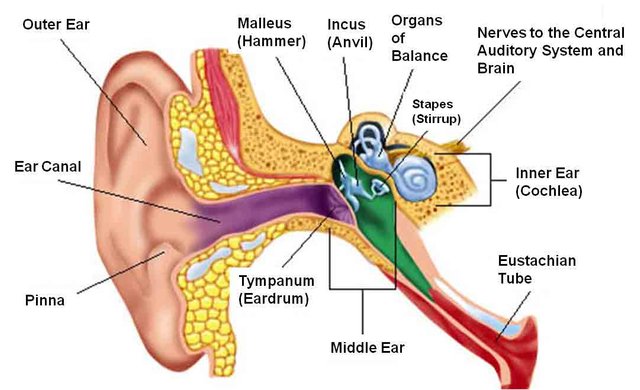How the human ear functions
We can hear with the help of one of the highly sensitive organ of our body called the ear. Audible frequencies help the ear convert pressure variations in air into electrical signals that travel to our brains through auditory nerve.

The outer ear which we see is called pinna and collects sound from the surroundings. This collected sound passes through the auditory canal, at the end of which there is a thin membrane called ear drum or tympanic membrane. The sound travels through a series of compression and rarefactions through the medium. When one such compression of the medium reaches the eardrum the pressure on the outside of it increases and pushes the eardrum inward.
In the same way, the eardrum moves outward. When a rarefaction reaches its so the eardrum vibrates in this way. These vibrations are amplified a number of times by three bones named hammer, anvil and stirrup in the middle ear, which transmits the amplified pressure variations received from the sound wave to the inner ear. In the inner ear the pressure vibrations are turned into electrical signals by the cochlea. These electrical signals are transmitted to the brain through auditory nerve and the brain interprets the electrical signal to sound again.